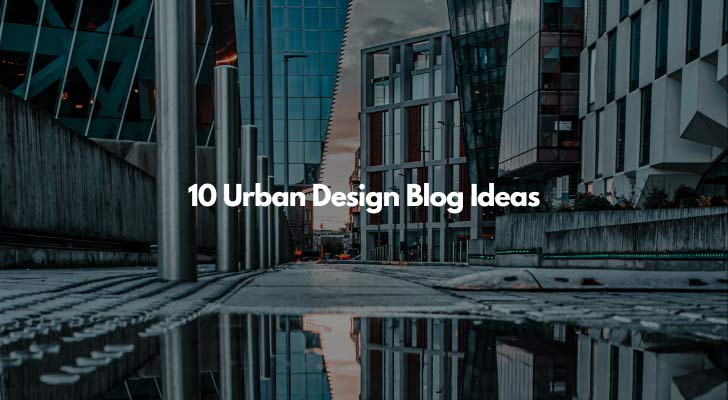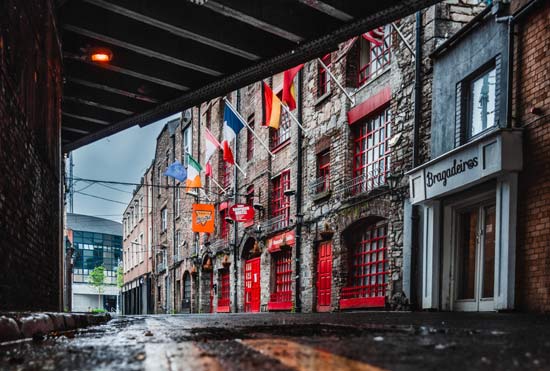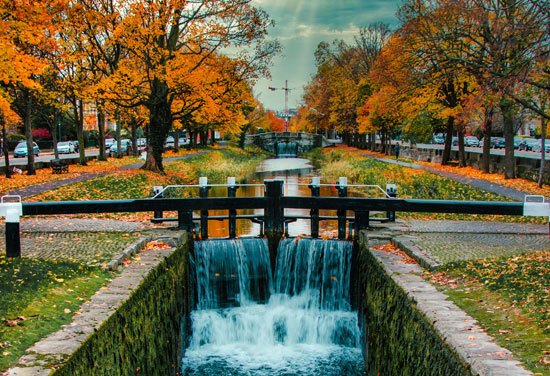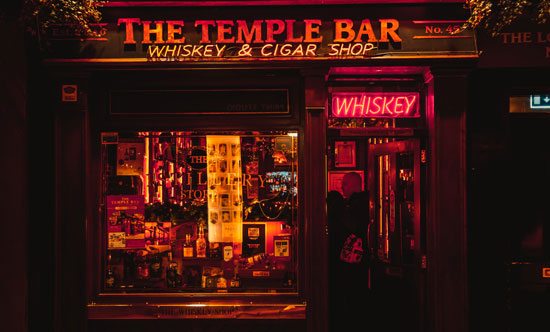Urban design - Everyone's a critic, and the minute you start to monetize your blog, you'll notice how everyone suddenly becomes an expert. Talking about urban design on a blog platform isn't just about sharing ideas; it's about creating a community where people dig the idea of better city living, right? It's a topic that's not just close to your heart, but also to those who live, work, and play in these urban landscapes.

All photos: Luciann Photography
#1 Diversity in Urban Design
Ever wandered through a city and felt like you've traveled the world without leaving the sidewalk? That's the power of cultural diversity in urban design. Let's take a stroll through the neighborhoods that showcase this melting pot of influences.
- Little Italy, New York: Narrow streets, family-owned pizzerias, and the annual San Gennaro festival give you a taste of Italy, right in the middle of Manhattan. The architecture here is all about those old-world charm - fire escapes twisting down the fronts of brick buildings, old-school delis, and, of course, the iconic red, white, and green stripes.
- Chinatown, San Francisco: With the largest Chinatown outside of Asia, San Francisco offers an explosion of cultural experiences. The Dragon's Gate entrance sets the tone, and once you're in, it's a world of pagoda roofs, vibrant markets, and the scent of fresh dim sum in the air. Ever seen a fortune cookie made by hand? This is the place.
You'd be surprised how much these cultural hubs contribute to a city’s overall vibe. They're not just places to grab a good meal; they're living, breathing parts of the urban fabric that tell the stories of generations. These neighborhoods remind us that design isn't just about buildings; it's about the souls of the cities, right?
#2 Revitalizing Spaces
Now, let's turn the concrete jungle into a green wonderland. Picture an old rail line turned lush walkway or a block of abandoned houses reborn as community gardens. Sounds dreamy, doesn't it? Here are a couple of places that have done just that.
- The High Line, New York: Once a derelict railway, now a lush park in the sky. Walking the High Line is like floating above the city's hustle, surrounded by greenery and art installations. It's a prime example of how a space can flip from gray to green, giving people a peaceful track in the sky.
- Landschaftspark, Germany: Germany takes it a step further - imagine an old steel mill turned into a public park. Yes, it’s wild how a place once so industrial can turn into a playground for both kids and adults, isn't it? Climbing walls on old furnaces, a scuba diving pool in the gasometer, and gardens where iron once flowed.
These transformations are more than just a facelift; they're about giving the city back to its people in ways that no one expected. They're proof that with a bit of creativity, even the most overlooked spaces can become the heartbeat of the community. Makes you wonder what forgotten corner of your own city could be the next urban oasis, right?

#3 Designing Walkable Cities
When you can ditch the car and take to the streets by foot, you know you're in a place that values the shoe-leather express. Walking's not just good for your health; it connects you with the heartbeat of the city, right? Let's lace up and check out what makes a city a walker's delight.
- Copenhagen's Strøget: One of Europe's longest pedestrian streets, it's a no-go for cars but a yes-please for everyone else. Cafés spill out onto the sidewalks, street performers bring the walkways to life, and it's all about that easy-going stroll.
- Melbourne's Laneways: Once service lanes and now the life of the party with their hole-in-the-wall cafés, buzzing bars, and spray-painted murals. Who knew a shortcut could be so full of surprises?
Cities that get walkability right know it’s more than just paving a pedestrian zone. It’s about crafting spaces that invite you to slow down, look around, and even stop for a chat. Feels good to put the brakes on the rat race, doesn’t it?
Did You Know You Already Have a LOT To Sell?
So What's Your Problem Biatch?
#4 Smart Urban Design
Now we have an app for almost everything, don't we? Our cities are getting smarter too. Imagine street lights that dim when no one's around or parking spaces that text you when they're free. Here are a couple of smart city features that make urban living smoother.
- Barcelona's Smart Lighting: Not just a pretty city, Barcelona's also bright - smart street lights only shine bright when they're needed, saving energy and cutting costs. Pretty smart, right?
- Singapore's Smart Traffic Systems: Traffic jams can be a real headache, but in Singapore, sensors and AI help manage the flow, so there's less waiting at reds and more green-light-go.
Smart tech in cities isn’t just about convenience; it’s about creating environments that adapt to our needs in real time. You ever think you’d see the day when the city seems to know what you need before you do? It’s like living in the future, minus the flying cars. But who knows what’s next?
#5 Cities Through the Eyes of Kids
Have you ever seen a kid zoom down a city sidewalk, dodging pedestrians with the finesse of a tiny urban adventurer? Cities through the eyes of kids are magical places where every plaza is a potential play space and every fountain might as well be a water park.
- Tokyo's Playgrounds: In Tokyo, playgrounds take the shape of giant robots and creatures from folklore. Wouldn't it be amazing to climb up a Godzilla slide?
- Rotterdam's Public Art: Over in Rotterdam, they get that public art can double as play structures. Ever played tag around a massive Picasso sculpture?
Kids remind us that cities shouldn't just be about getting from point A to B. They're also about those little moments of joy, like hopping across a quirky crosswalk or discovering a park tucked away in an alley. Cities should have spaces where kids can be, well, kids, right?
#6 Preserving Our Urban Heritage
Strolling through a city can be like walking back in time - if you know where to look. Those old buildings and cobbled streets aren't just pretty; they're chapters in a city's story. It's all about keeping the past alive, not just behind museum glass, but where we live, work, and play.
- Rome's Ancient Ruins: In Rome, you can’t throw a stone without hitting ancient ruins. The city is a live museum, where modern life buzzes around thousand-year-old sites.
- The French Quarter, New Orleans: With its Creole townhouses and wrought-iron balconies, the French Quarter looks like a slice of history frozen in time, yet it's anything but static. Can you hear the jazz?
Preserving history means bridging the gap between yesterday and today, ensuring that the spirit of the old neighborhood lives on, even as new chapters are written. Feels good to walk down a street and feel the echoes of history.
#7 Urban Parks and Quality of Life

You've probably heard about the High Line in New York, but did you know that green spaces like this can totally change the game for city dwellers? It's all about bringing a slice of nature into the concrete jungle, and the perks are huge.
- Greenery Equals Serenity: Just ask anyone who's grabbed their lunch and escaped to the nearest park bench. Trees and plants are good for the soul, aren't they?
- Social Spaces: These parks are more than just pretty - they're social hubs. Think about the last time you saw an outdoor yoga class or a group of friends picnicking. Doesn't it just bring a place to life?
Creating a park can flip a rundown area into the neighborhood's favorite spot. Take the High Line - what was once an old rail track is now where you can walk among the wildflowers, eye-to-eye with the second stories of buildings. Cities need these lungs, don't they?
#8 Barrier-Free Building: Inclusive Urban Design
Ever tried to push a stroller up a flight of stairs? Or navigate a busy intersection in a wheelchair? It’s a tough world out there if you've got mobility challenges. That’s where inclusive urban design steps in, making sure everyone can use the city, no matter what.
- Ramps and Rails: Public spaces should welcome everyone, and that means ramps for wheels and rails for stability. It’s just common sense, right?
- Tactile Paving: You've seen those textured strips on sidewalk corners? They're there so that people with visual impairments can feel their way safely around the city. Smart and considerate, that’s how design should be, don’t you think?
Inclusive design is about making sure the city is as awesome for your grandma as it is for a jogger. It’s about building a place where everyone has a shot at enjoying everything the city offers. Makes you look at those curb cuts and automatic doors in a whole new light!
#9 Artistic Expressions: Street Art and City Identity
Imagine wandering through a city where every corner is a canvas, and every wall tells a story. Street art does more than just add a splash of color; it can become the voice of a city, right?
- Berlin's Graffiti: Berlin's East Side Gallery, a stretch of the Berlin Wall, is a historical canvas that speaks volumes about the city's past and present. It's pretty wild to think of a wall once symbolizing division now uniting people through art, isn't it?
- Banksy's Impact: Then there's the elusive Banksy, whose work pops up unexpectedly, turning ordinary city walls into tourist hotspots overnight. Makes you think about the power of a simple stencil, right?
Street art shapes how we experience a city, giving us insight into its pulse and what matters to its people. Ever snapped a photo of a particularly cool piece? It's like the city's saying, "This is who we are," in the most vibrant way possible.
#10 Urban Farming and Sustainability
Now let's talk about the green revolution happening right on rooftops and in empty lots. Urban farming is not just for the green-thumbed enthusiast; it's a full-on movement towards sustainability and self-sufficiency.
- Rooftop Gardens: In cities like Toronto, rooftops are turning into gardens, providing fresh produce and a bit of green space sky-high. Ever tasted a tomato fresh off the vine five stories up?
- Community Gardens: Community gardens are sprouting up everywhere. They're not just about the harvest; they're about community bonds. Ever seen a vacant lot turn into a neighborhood hub filled with planters and people?
Sustainability isn't just a buzzword when it comes to urban farming; it's about practical, everyday choices that lessen our footprint and feed our souls (and stomachs). Wouldn't it be amazing to see every empty space bloom into something that gives back?

Can You Give Consulting Services On Your Blog?
Offering your expertise can be a goldmine. As an urban design aficionado, you can provide tailored advice to local businesses or homeowners looking to integrate urban design principles into their spaces. For example:
- Outdoor Seating Areas: Restaurants often need help creating inviting outdoor dining spaces. Why not guide them on the best use of space, materials, and vegetation?
- Home Exterior Makeovers: Homeowners might be interested in urban design trends for their patios or facades. Offering a consultation service directly through your blog can lead to some lucrative contracts, don’t you think?
How About Virtual Tours of Urban Design Highlights?
Virtual tours have become a hit, and they can be quite the moneymaker. By using 360-degree cameras and a bit of editing, you can create immersive experiences.
- Historic Neighborhoods: Guide viewers through historic districts, focusing on the design elements that give these areas character.
- Modern Urban Spaces: Showcase innovative urban design projects that may inspire others. You can charge for full access or create exclusive content for subscribers.
This could transform how people experience and learn about urban design, and it puts you right at the center of it all.

How About Selling Stuff?
Urban design isn't just about spaces; it's about the lifestyle. Creating and selling merchandise that reflects urban design elements will be a super-great idea.
- Art Prints: Offer high-quality prints of your original sketches or photography of iconic urban designs.
- Apparel: Launch a line of apparel featuring patterns or icons related to urban design. Everyone loves a good tee with a sleek cityscape or architectural design, right?
These can serve as walking billboards for your blog while bringing in some nice cash.
Paid Urban Design Challenges?
People love to showcase their creativity, and a design challenge is perfect for engagement.
- Redesign a Public Space: Challenge your readers to come up with innovative designs for a local, underused public space. A small entry fee can lead to a cash prize for the winner.
- Sustainable Design Solutions: Propose a challenge to create sustainable urban design solutions for common city problems.
You could attract sponsors for the challenges, plus it gives participants a reason to keep coming back to your blog to see updates and winners.
Urban Design Book Reviews?
You read and know a lot about urban design books, so why not monetize that knowledge?
- E-book Sales: Write and sell your own e-books covering different aspects of urban design.
- Affiliate Links: Review books and provide affiliate links where readers can purchase them.
You're already discussing these resources; you might as well make it easier for your readers to find and buy them, and earn yourself a little something in the process, right?
Tapping into these methods could turn your blog from a hobby into a profitable venture, giving you the means to dive even deeper into the urban design world. And isn't that the dream for any enthusiast?
Did You Know You Already Have A LOT To Sell?
So What's Your Problem?

